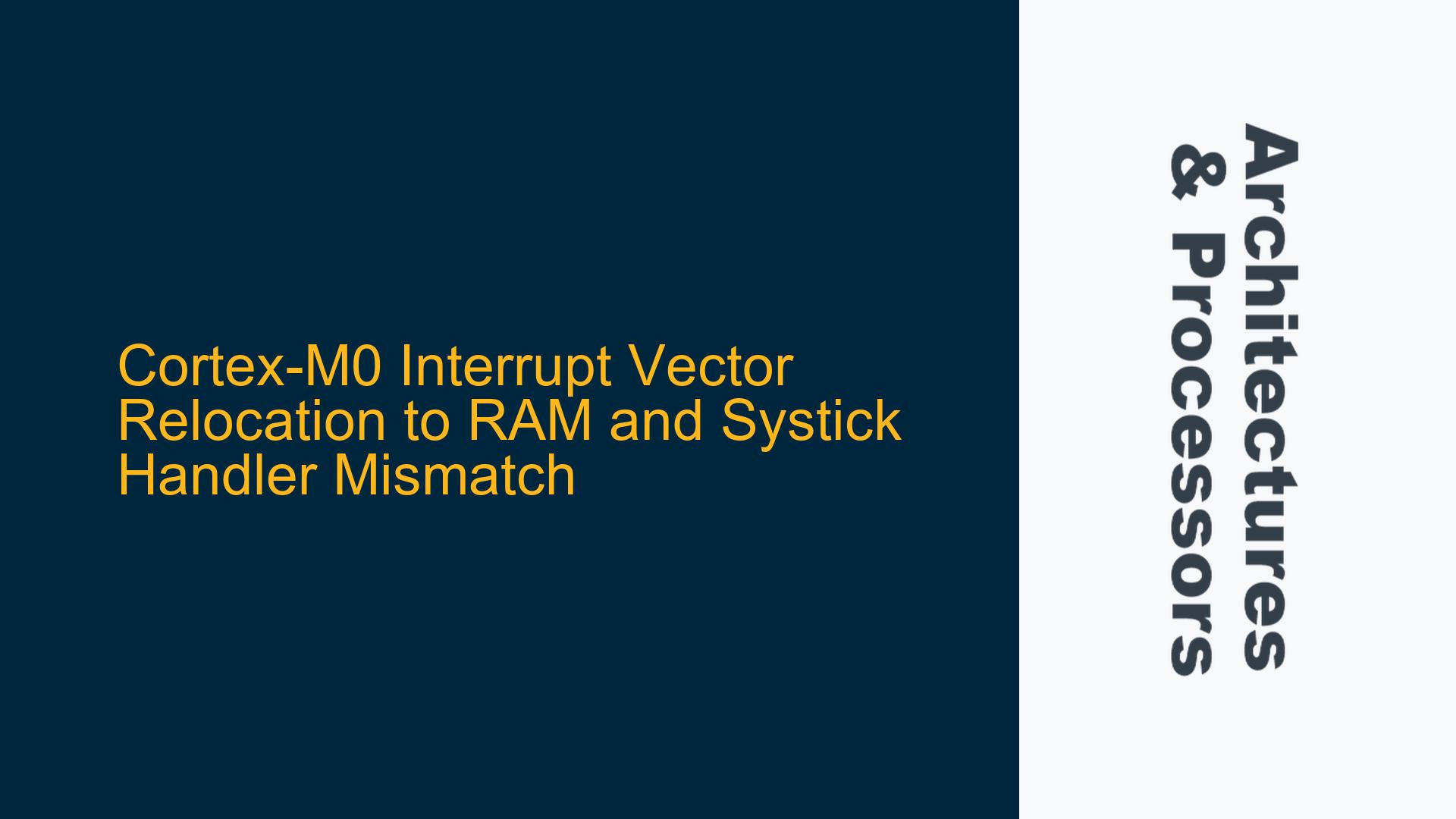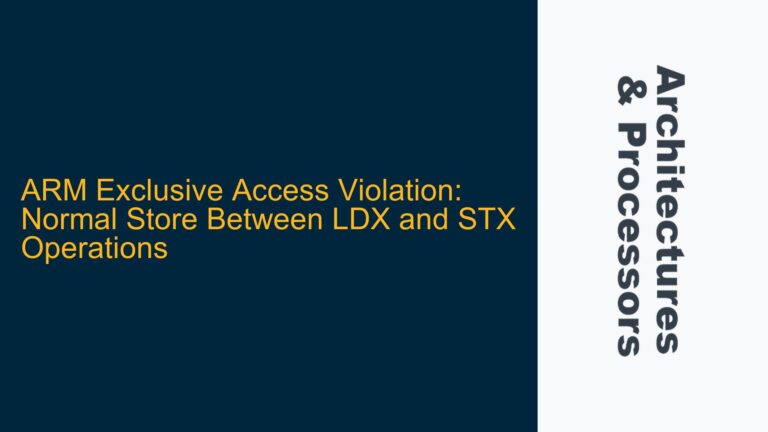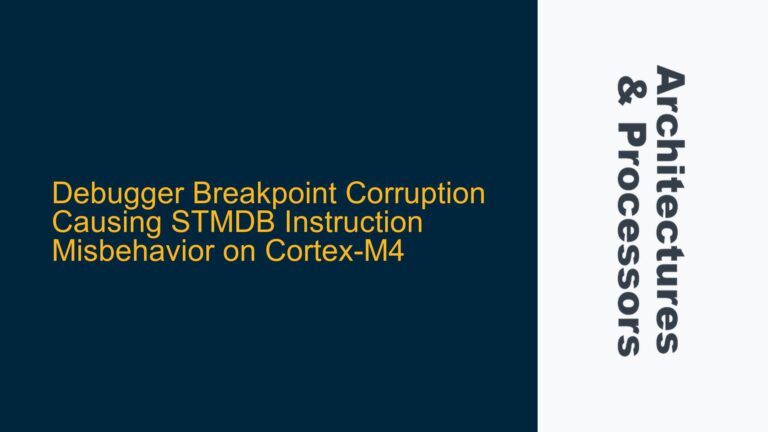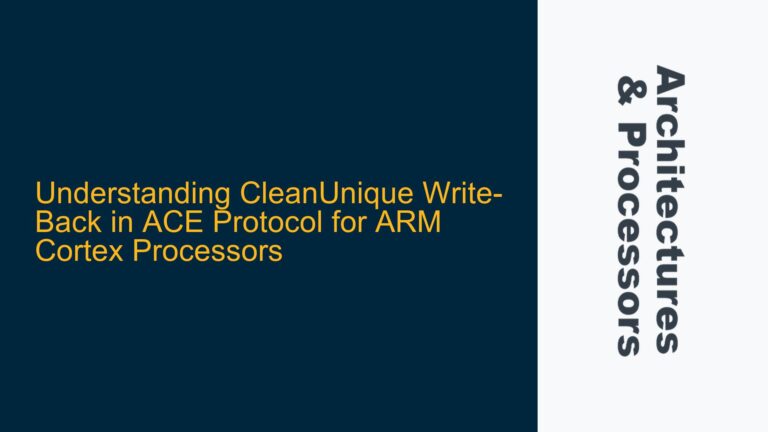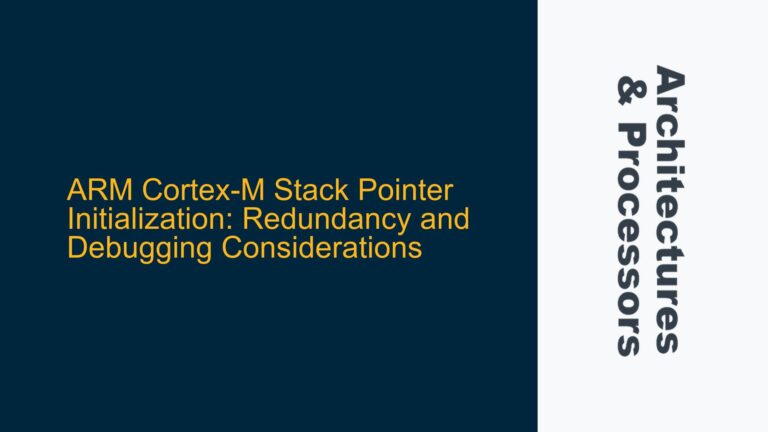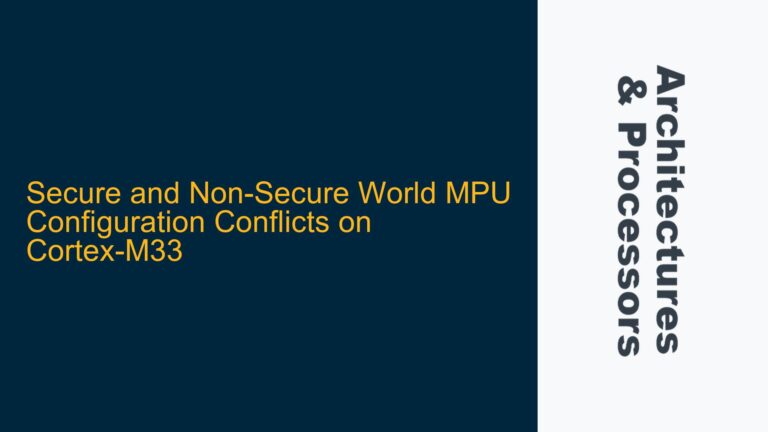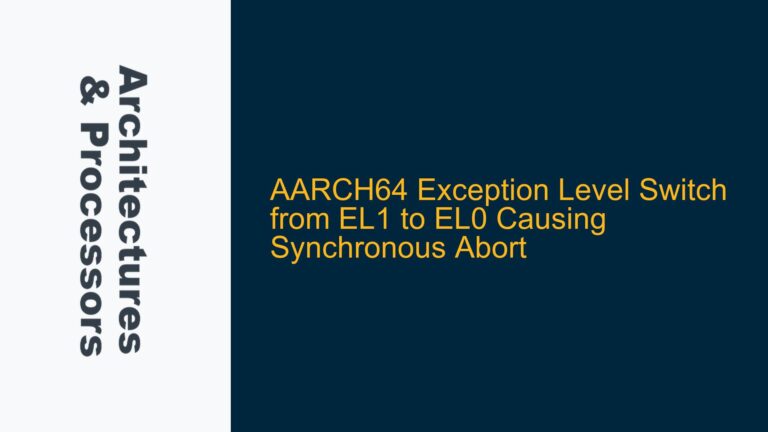ARM Cortex-M0 Interrupt Vector Table Relocation Challenges with Systick Handler Mismatch
The ARM Cortex-M0 architecture, while being a highly efficient and cost-effective solution for embedded systems, presents unique challenges when relocating the interrupt vector table (IVT) to RAM. This is particularly evident when transitioning from a bootloader to an application, where the Systick interrupt handler fails to switch to the application’s handler despite correct RAM mapping and vector table configuration. This issue is exacerbated by the Cortex-M0’s lack of a Vector Table Offset Register (VTOR), which is available in higher-end Cortex-M processors. The absence of VTOR necessitates manual intervention to ensure the interrupt vectors are correctly referenced, especially during the handover from bootloader to application.
The core of the problem lies in the Systick interrupt handler continuing to execute the bootloader’s handler instead of the application’s handler, even though the IVT in RAM has been correctly populated with the application’s Systick handler address. This behavior suggests a subtle timing or synchronization issue in the handover process, where the Cortex-M0’s interrupt handling mechanism is not fully aligned with the relocated IVT in RAM. Understanding this requires a deep dive into the Cortex-M0’s interrupt handling architecture, the role of the stack pointer (SP), and the implications of IVT relocation without VTOR support.
Bootloader-to-Application Transition and Systick Handler Persistence
One of the primary causes of the Systick handler mismatch is the timing of the IVT relocation and the enabling of interrupts during the bootloader-to-application transition. The Cortex-M0’s interrupt handling mechanism relies on the IVT being correctly referenced at the time an interrupt occurs. If the IVT relocation is not fully synchronized with the interrupt enable state, the processor may continue to use the bootloader’s IVT, leading to the execution of the wrong Systick handler.
Another potential cause is the improper initialization or management of the stack pointer (SP) during the transition. The SP plays a critical role in interrupt handling, as it determines the context in which the interrupt is serviced. If the SP is not correctly set to the application’s stack before the IVT relocation, the processor may incorrectly reference the bootloader’s stack, leading to undefined behavior, including the execution of the wrong interrupt handler.
Additionally, the lack of VTOR in the Cortex-M0 means that the IVT must be manually relocated to RAM, and the processor must be explicitly instructed to use the new IVT. This process involves copying the application’s IVT to the designated RAM location, updating the SP, and ensuring that interrupts are disabled during the transition to prevent any race conditions. Any misstep in this sequence can result in the processor continuing to use the bootloader’s IVT, leading to the observed Systick handler mismatch.
Synchronizing IVT Relocation and Interrupt Handling in Cortex-M0
To resolve the Systick handler mismatch issue, a systematic approach to synchronizing the IVT relocation and interrupt handling is required. The first step is to ensure that the application’s IVT is correctly copied to the designated RAM location before any interrupts are enabled. This involves disabling interrupts during the IVT relocation process to prevent any race conditions. The following assembly code snippet demonstrates how to disable interrupts, copy the IVT to RAM, and update the SP:
CPSID I ; Disable interrupts
LDR R0, =APP_IVT_START ; Load start address of application IVT
LDR R1, =RAM_IVT_START ; Load start address of RAM IVT
LDR R2, =IVT_SIZE ; Load size of IVT
copy_loop:
LDR R3, [R0], #4 ; Load word from application IVT
STR R3, [R1], #4 ; Store word to RAM IVT
SUBS R2, R2, #1 ; Decrement counter
BNE copy_loop ; Repeat until all words are copied
LDR SP, =APP_STACK_TOP ; Update stack pointer to application stack
CPSIE I ; Enable interrupts
The next step is to ensure that the Systick interrupt is correctly configured in the application’s IVT. This involves verifying that the address of the application’s Systick handler is correctly placed at the appropriate offset in the IVT. The following table illustrates the correct placement of the Systick handler in the IVT:
| Offset | Handler |
|---|---|
| 0x3C | Systick_Handler |
Finally, it is crucial to verify that the Systick interrupt is correctly enabled and configured in the application. This involves setting the Systick reload value, enabling the Systick interrupt, and ensuring that the Systick handler is correctly referenced in the IVT. The following code snippet demonstrates how to configure the Systick interrupt in the application:
void Systick_Handler(void) {
// Application-specific Systick handler code
}
void configure_systick(void) {
SysTick->LOAD = SYSTICK_RELOAD_VALUE; // Set Systick reload value
SysTick->VAL = 0; // Clear Systick current value
SysTick->CTRL = SysTick_CTRL_CLKSOURCE_Msk |
SysTick_CTRL_TICKINT_Msk |
SysTick_CTRL_ENABLE_Msk; // Enable Systick interrupt
}
By following these steps, the Systick handler mismatch issue can be resolved, ensuring that the application’s Systick handler is correctly executed after the bootloader-to-application transition. This approach leverages a deep understanding of the Cortex-M0’s interrupt handling architecture and the implications of IVT relocation without VTOR support, providing a robust solution to a challenging problem.
